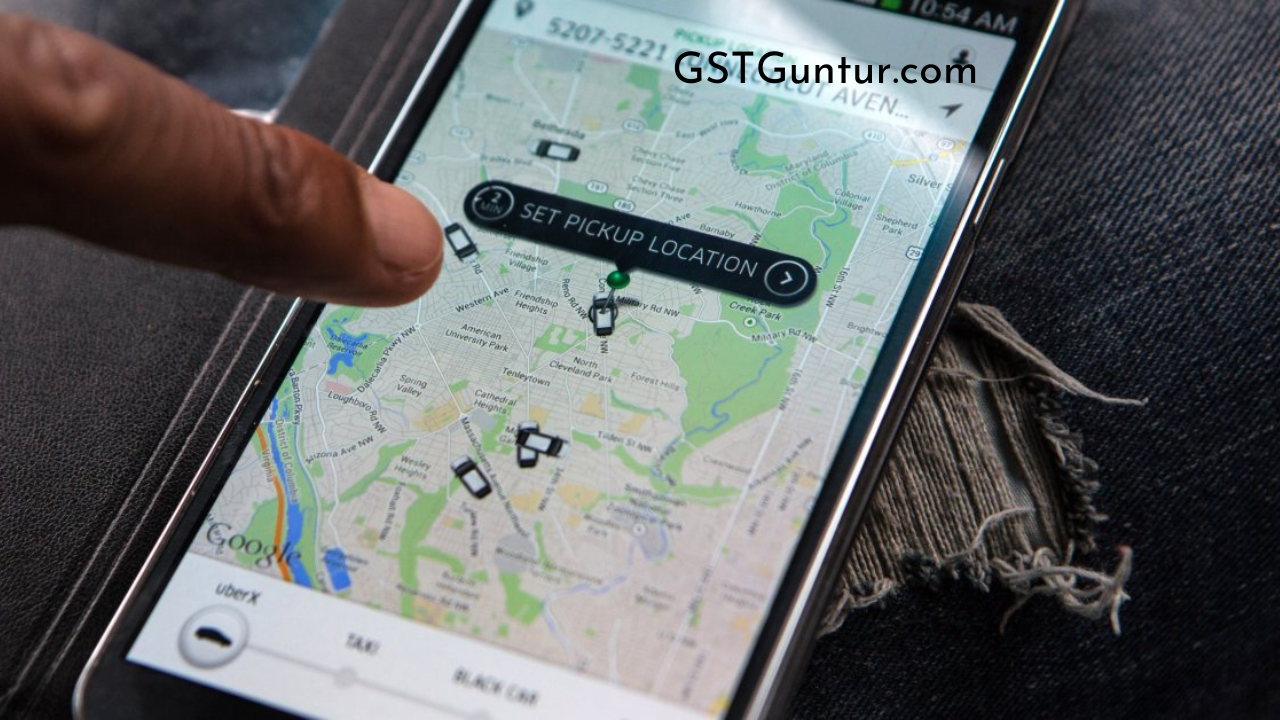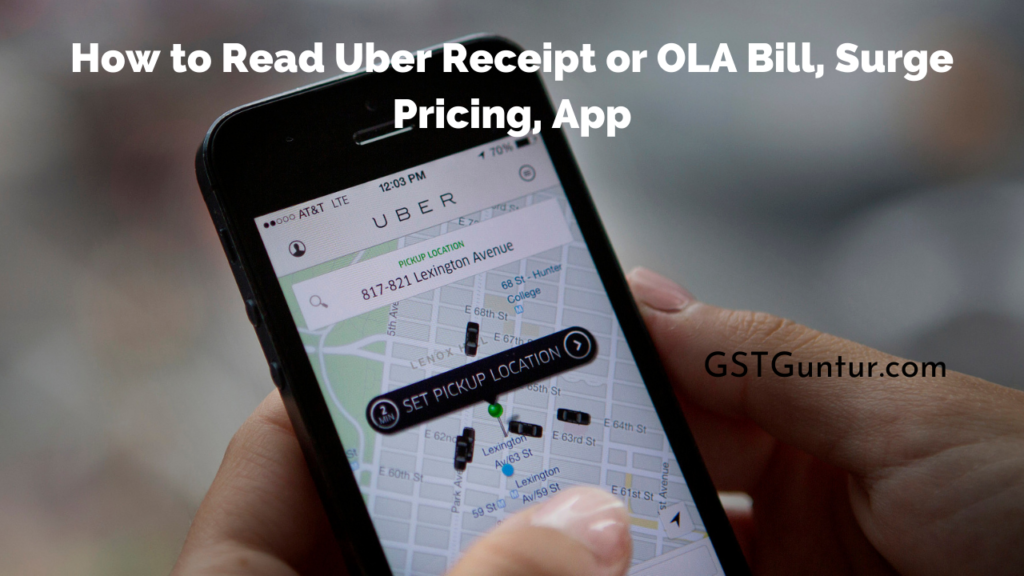How to Read Uber Receipt or OLA Bill, Surge Pricing, App Download: On-demand taxi aggregators such as Uber and Ola Cabs exist. Taxi aggregators usually do not own cabs or employ drivers; instead, they connect consumers with drivers via a digital platform, with the customer’s front-end often being an app. The benefit of employing them is that you won’t have to haggle with drivers, especially vehicle drivers, about where you want to travel and how much you’ll have to pay.
Ola began in December of 2010. TaxiForSure was launched in June 2011 and was purchased by Ola for $200 million in March 2015. Uber first arrived in India in October of 2013. Meru began in 2007, but it primarily used its cars, which it purchased and drove. In 2011, it began transitioning to an aggregate approach. Ola began offering cars on its marketplace in October of 2014.
- Cost of The Trip Is Determined By The Type of Cab Picked
- Uber Cab Types
- Ola Cabs are Available in a variety of Styles
- Fares Vary From City To City, and Even Within A City, Cab Rates Might Vary
- Getting to Know the Uber/Ola Receipt
- What is the Difference Between Surge Pricing and Peak Pricing?
- TAXY is an ANDROID App that Helps you Find a Cab
Cost of The Trip Is Determined By The Type of Cab Picked
The cost of travel is determined by the type of vehicle used during the journey. Uber offers three types of vehicles in India:
- uberGO (affordable hatchbacks or small cars)
- UberX (expensive mid-sized sedans)
- uberBLACK (high-end sedans) (larger vehicles at premium pricing)
Ola, on the other hand, offers the Ola Mini, Ola Sedan, and Ola Prime. Let’s take a closer look at these vehicles.
Uber Cab Types
- UberGo: It provides transportation in hatchbacks such as the Toyota Etios Liva and Maruti Ritz to customers.
- UberX: Uber’s low-cost option is UberX. Up to four people can be accommodated. People seeking a cab might choose from standard sedans such as the Maruti Swift Dzire.
- UberBLACK: It is UberX’s high-end variant. Uber Black provides low-cost vehicles such as the Toyota Camry and Audi A6. In a high-end vehicle, he picks you up. Seats up to four people.
- UberSUV: It is UberXL’s luxury variant. Seats up to 6 people. If they choose the SUV option, they will get a Toyota Innova or a Tata Aria.
- UberXL: UberXL is the company’s low-cost SUV alternative. Picks you up in your regular SUV, with seating for up to six people. It will feature vehicles such as the Maruti Suzuki Ertiga, Toyota Innova, and others that can seat up to 6 people.
- UberPOOL: It is Uber’s Indian ride-sharing service. It allows users to split the cost of the ride with another individual who is looking for a trip along the same route. You will be given automobiles similar to those available on UberX, but it will cost you 50% less, making it the cheapest Uber. This service began in August 2014 in San Francisco and has since spread to Paris, New York, Los Angeles, and Austin.
Ola Cabs are Available in a variety of Styles
- Ola Mini is the city’s most economical personal transportation alternative, with hatchbacks such as the Tata Indica and Nissan Micra among its fleet.
- Ola Sedan offers cars such as the Suzuki DZire, Mahindra Verito, and Toyota Etios, geared at typical city travellers searching for a spacious car and a comfortable journey.
- The Toyota Innova, Altis, Skoda Rapid, and Honda Civic are among the cars in the Ola Prime business class experience fleet.
Fares Vary From City To City, and Even Within A City, Cab Rates Might Vary
In Bangalore, for example, the base fare is Rs 40, and the fare for each km is Rs 7, but in Delhi, the base ticket is Rs 55, and the fare per km is Rs 55. Below is a comparison of fareUber X in Bangalore and Delhi.
| BASE FARE | Fare per unit of time | fare per unit of distance | MIN FARE | CANCELLATION FEE | |
| New Delhi | ₹ 55 | ₹ 1PER MINUTE | ₹ 9PER KILOMETER | ₹ 80 | ₹ 100 |
| Bangalore | ₹ 40 | ₹ 1PER MINUTE | ₹8 PER KILOMETER | ₹ 75 | ₹ 75 |
Within the city, charges may alter if a certain distance is travelled. Uber adds an extra cost for every kilometre after 15 kilometres. Depending on the city, this rate may differ. The new long-distance tariffs for Bangalore can be found here.
| Base | Per Minute | Regular Fare (Up to 15 KM) | Long Distance Fares (After 15 KM) | MINIMUM FARE | |
| uberGO | ₹35 | ₹1 | ₹7 | ₹14 | ₹50 |
| uberX | ₹40 | ₹1 | ₹8 | ₹16 | ₹75 |
At times, the Waiting fee is activated. The time it takes to board the cab after the pickup time and the time spent waiting during the trip are included in the waiting charge. All radio taxi and app-based taxi services, on the other hand, calculate it as the whole time spent on the journey, not simply the time spent stalled in traffic. At the same time, ride time refers to the overall amount of time spent from the time of pickup to the time of drop-off.
Getting to Know the Uber/Ola Receipt
Uber/Ola specifies three numbers that influence the pricing of your ride for a particular city and car type. There’s also a minimum fare and a cancellation fee, as well as the possibility of surge pricing.
- F is the standard fare.
- CPT is the fare per unit of time.
- CPD (cost per unit of distance) is the fare per unit of distance.
These figures are added together to get the ultimate pricing for a particular ride. The time and distance fares are both applied to the entire journey.
Total Fare = Base Fare + Cost Per Unit of Time * Total Time Involved + Cost Per Unit of Distance * Total Distance Travelled.
If you rode for T minutes and covered a distance of D miles, your total cost is = B+CPT*T+CPD*D.

What is the Difference Between Surge Pricing and Peak Pricing?
Surge pricing occurs when there is a strong demand for vehicles in a specific area, such as on weekends, holidays, or inclement weather. When a massive number of ride requests are received in a short period in a specific location relative to the number of drivers currently on the road, the price of all rides in that area is boosted or surged by a factor of many (displayed as 1.5x or 2.1x, for example).
The ratio between the number of demand for rides and the supply of drivers when the surge takes effect determines the multiple degrees. A metro area’s many portions are divided into neighbourhoods. When demand grows in a neighbourhood, the colour of that neighbourhood changes on the Uber driver app (see below). Increased demand is indicated by yellow, severely increased demand is indicated by orange, and demand has reached a level that produces a surge is indicated by red. The multiplier 1.2x, 1.4x, etc., determines the magnitude of the surge. A fare increase equal to the multiplier will be applied to any rides provided in that area. Surge pricing areas are not visible on the map in the passenger app. It only appears when the Surge Icon is selected. Surge pricing is not a real-time, constantly updated price; it will expire after a certain number of minutes and be recalculated based on the current demand/supply ratio.
Surge pricing is designed to motivate drivers to put more cabs on the road when they’re needed the most. Whether surge pricing indeed encourages more drivers to come on the road is hotly debated on the internet. Surge pricing is a computer-controlled algorithm. Uber’s human personnel have also kept an eye on demand spikes and, on rare occasions, used their discretion to cut costs.
Uber/Ola aren’t the only ones who use a dynamic pricing method. Hotels utilise dynamic pricing to reserve rooms, and airlines employ similar strategies to sell tickets, especially during busy holiday seasons. What sets Uber/Ola apart is that the corporation is upfront and open about how much you’ll pay if the price goes up. The taxi cab app will always ask you before requesting a car for you, so you will never pay the spiked fare amount until you agree on the fare price.
During peak periods, surge pricing applies a multiplier to all fares. As a result, the following is how Surge pricing is calculated. As previously stated, it calculates the standard fare. The standard fare is then multiplied by a supercharged multiplier.
If you do not wish to pay the surge pricing surcharge, you have the following options:
- Wait for the price to drop.
- Look into OLA or another ride-sharing service.
- Take a taxi, take the bus, phone a buddy, walk, and so on.
TAXY is an ANDROID App that Helps you Find a Cab
Taxy will assist you in locating a taxi, both private and black-and-yellow, in your area at the most competitive price. This program uses data from Uber, Ola Cabs, and TaxiForSure to locate all available cars in your area and sort them into two columns: cheapest and nearest. It will also include information on the taxi service, the type of taxi, and the estimated trip time. You can even program the app to notify you at a specific time and display the best cabs available at that time. Taxis are currently available in 52 cities: Delhi, Mumbai, Bengaluru, Kolkata, Pune, Goa, Kochi, Bhopal, Chandigarh, and Surat.
